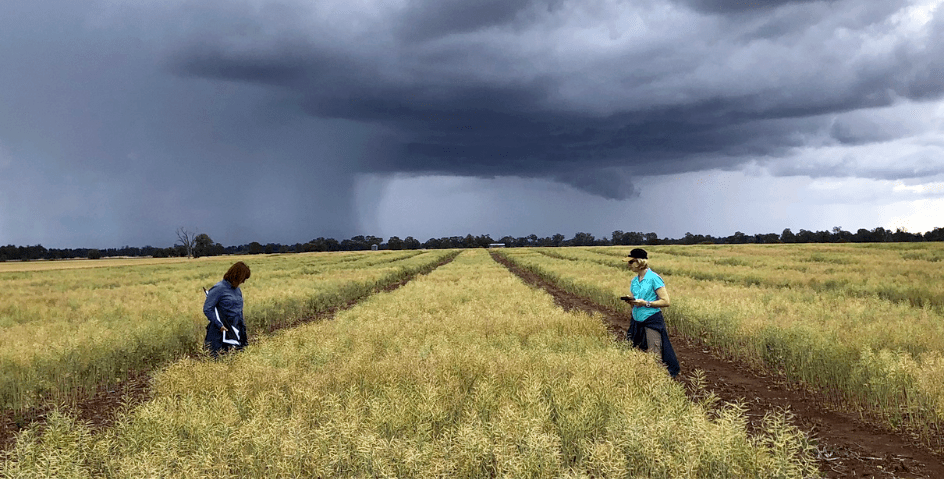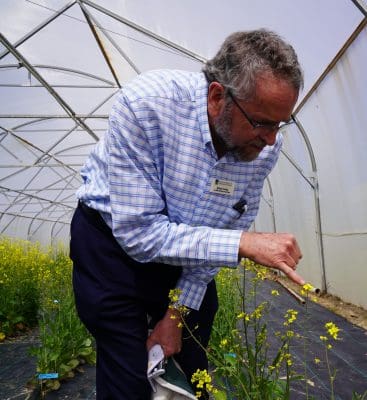
UWA canola technicians Jasenka Vuksic and Roz Ezzy in a canola field trial near Rutherglen, Victoria, assessing blackleg disease resistance. Photo: UWA
RESEARCHERS from the University of Western Australia’s Institute of Agriculture, in collaboration with animal-breeding researchers at the University of New England in New South Wales, have developed a novel crop-breeding method that achieved very high rates of genetic gain in canola in Australia and Canada.
The research, recently published in the international journal Plants, was funded by the plant-breeding company Norddeutsche Pflanzenzucht Hans-Georg Lembke KG (NPZ) as part of its canola pre-breeding research agreement with UWA.
UWA project leader Professor Wallace Cowling said the research had identified a new and innovative method of breeding annual grain crops.
“Our method resulted in a genetic gain in grain yield of up to 4.3pc per annum in our global spring canola breeding program since 2016,” Professor Cowling said.
The method has also increased oil and protein levels in canola seed while rapidly improving resistance to blackleg disease.
Animal breeding applications
The researchers used the latest animal-breeding technology based on optimal contributions selection to combine rapid cycles of genetic selection in canola.
UNE Emeritus Professor Brian Kinghorn said he considered the project to be a valuable extension of his research on optimal contributions selection in animals.
“We developed MateSel software to help animal, tree and crop breeders to optimise the multiple competing objectives of their breeding programs,” Emeritus Prof Kinghorn said.

Associate Professor Wallace Cowling. Photo: UWA
“MateSel in this project was used to optimise decisions to achieve world-leading rates of genetic gain in grain yield and other economic traits in Australia and Canada.”
Professor Cowling said the recent publication was the culmination of 10 years of research.
“We asked our partners NPZ in Europe and DL Seeds in Canada to send their latest canola varieties for intercrossing in 2012.
“Every two years we crossed the best offspring and field-tested the progeny in Australia and Canada.
“We are excited that we achieved very high rates of genetic gain in grain yield, but we also show genetic gains are stable across a diverse range of environments.”
One future possibility, discussed in the paper, is the breeding of crops for different global environments and markets in a single program using multiple end-uses in MateSel.
“This is how technological transformation occurs – through the sharing of ideas and technology among researchers at the forefront of their careers in different fields.
“We are fortunate to have great collaboration between UWA and UNE researchers on this project, and the support of international canola breeding industry partner NPZ.”
Source: UWA

HAVE YOUR SAY